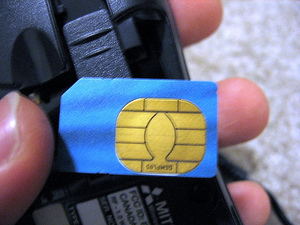As a former employee of Sprint/Nextel for over five years,and a loyal customer of Sprint for four years, one issue that has been drilled into every technical service representative’s brain is the difference between Global Systems for Mobile Communications (GSM) and Code Division Multiple Access (CDMA) technology. Basically, the war that goes on between the two is like a fight between Superman and Batman. Each claims to have the best coverage, the best quality, but really, what are the differences? Surely, they both cannot be the best. Or can they?
Just like any consumer choice made today, personal need is key in the decision making process with cellular service. The first question a western consumer should ask their self is: “Do I travel to Europe and Asia frequently?” If the answer is yes and they live in the western hemisphere, then GSM technology may be the way to go.
VOICE COVERAGE
The eastern hemisphere still deals mainly in GSM technology, although GSM technology offers coverage not only in GSM areas, but also roaming in GSM international areas. So for instance, if a European traveler travels to the United States, there is a great chance his or her phone will work on the United States GSM network, provided their phone is a Tri-band phone. A Tri-band phone works on 900 MHz, 1800 MHz and 1900 MHz frequencies. North America works on a 1900 MHz frequency, hence the need for a Tri-band device. If the answer is no, then the next question may be “If I do travel outside my local calling area but on an infrequent basis, what are my options?
The first option is buying a GSM Tri-band or quad-band device, but the downside is that it could be rather expensive. Tri and quad-band devices work in virtually every country, even Zimbabwe, where coverage is extremely poor.
The second option would be to lease a tri or quad-band GSM device from a cellular carrier such as Sprint/Nextel. Not only does Sprint/Nextel sell CDMA and iDEN devices, Sprint leases and sells GSM devices for international use.
The Sprint subscriber would use his or her current subscriber phone number and transfer it to the GSM device. Once the GSM device is activated, the only maintenance required to use it from country to country would be to power off the device and power it back on in the new country.This option is a lot less expensive than purchasing one, and the coverage is wonderful!
These days, phones are more than just something to talk through, they are like a virtual “Grand Central Station” for hand-held communication. Both CDMA and GSM technologies rave about the speed of their data transfer services. CDMA has EVDO, otherwise known as “Evolution, Data Only or Optimized”, and GSM has EDGE (Enhanced Data Rates for GSM Evolution.) Both services claim fast upload and download rates, but CDMA’s EVDO beats GSM’s EDGE speed by about 40 percent.
The last noticeable difference in each technology is that little tiny chip called a SIM card that each GSM phone must carry in order for it to work on a network. SIM, short for Subscriber Identity Module, is a tiny computerized card that stores all your identifiable information. This card can be removed and placed into another GSM device. This adds a convenience factor to GSM technology. Upgrading a phone is as simple as taking the SIM card out of the old device and placing it into the new one. But with every convenience, there is a downside. If someone removes your SIM card and attaches it to a device they have, all of your identifiable information is available to him or her. Also, it is extremely difficult to disprove a phone related crime if it was done through your SIM card. Although an alibi can be established once the network traces the towers used for the phone related crimes, the hassle of proof and the possibility of identity theft is far too great a risk for some to handle.
Except for some CDMA devices in Asia, CDMA technology does not have SIM cards. All identifiable information is kept on the networks database via the ESN (Electronic Serial Number) of the device being used. Although upgrading a CDMA device is less convenient when it comes to upgrading or transferring service from one device to the other, it is more secure, and identity theft is less of an issue. So, as this article shows, CDMA and GSM technologies are fast becoming intertwined. Who is best? Both technologies offer great coverage and convenience. The trick is to do individual research and conclude which service is right for the area being covered
